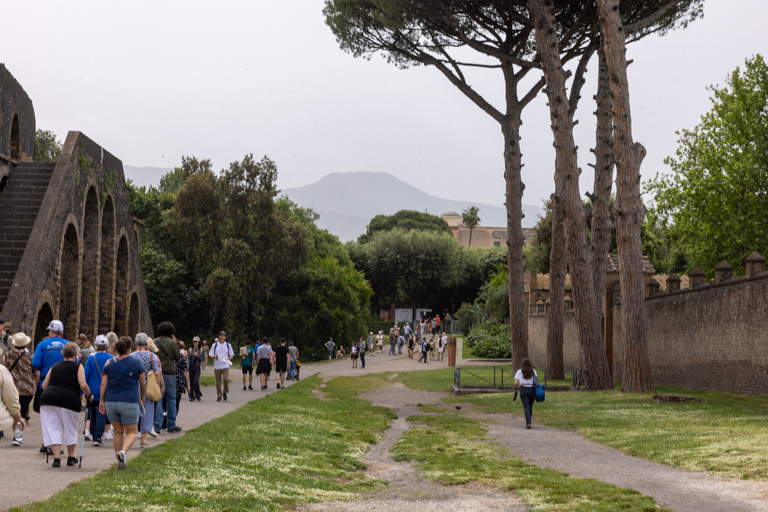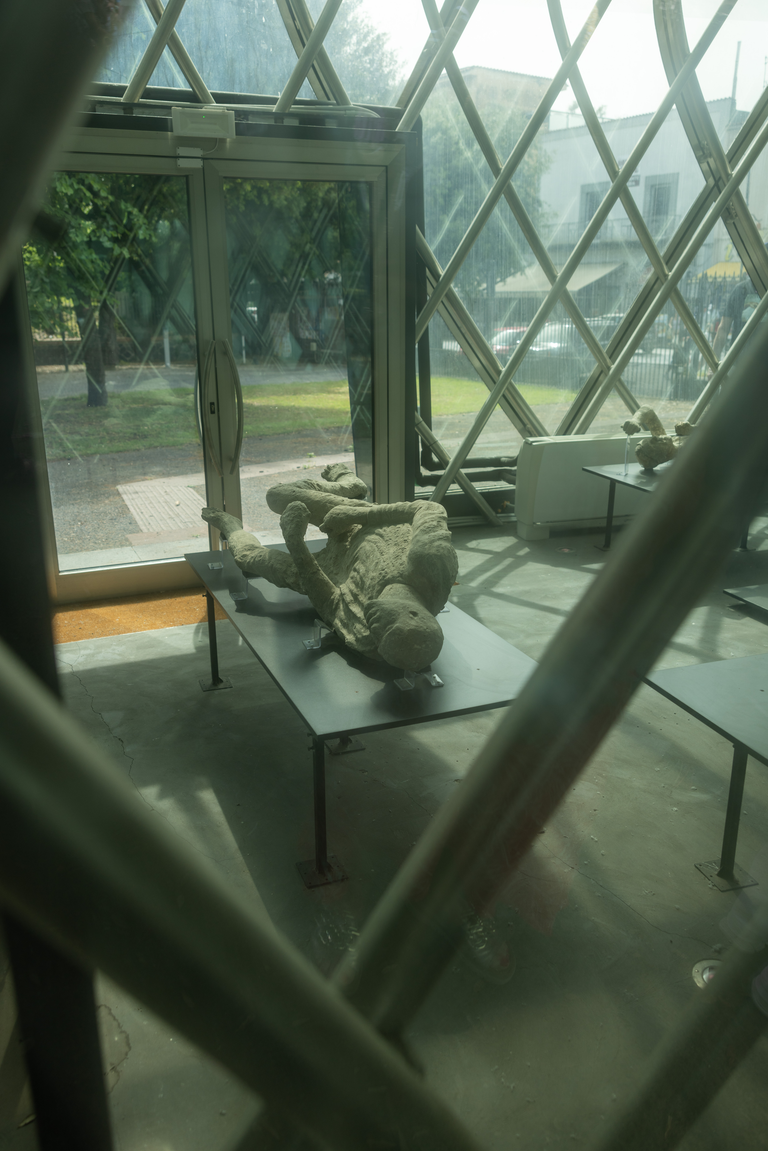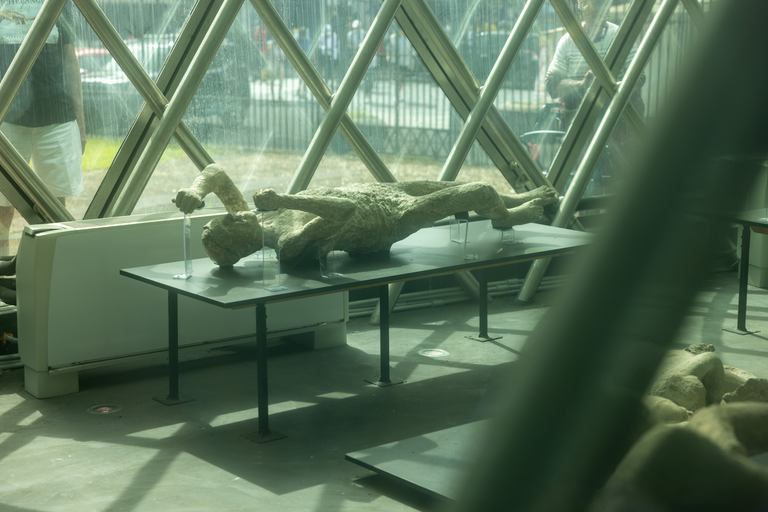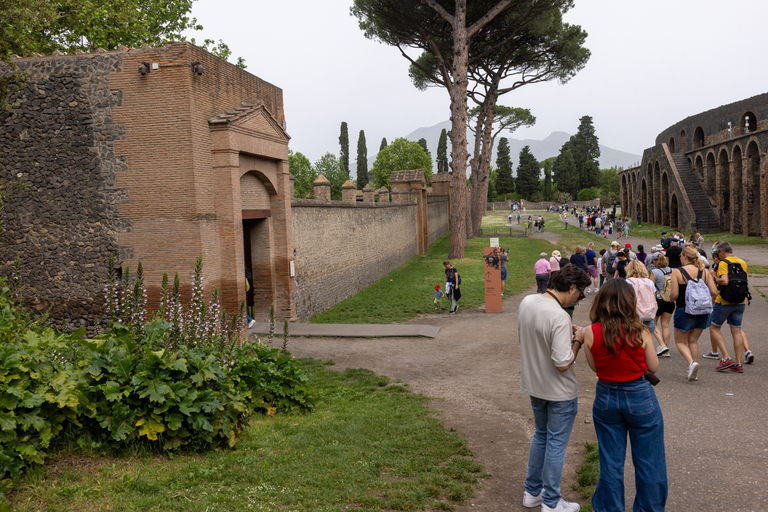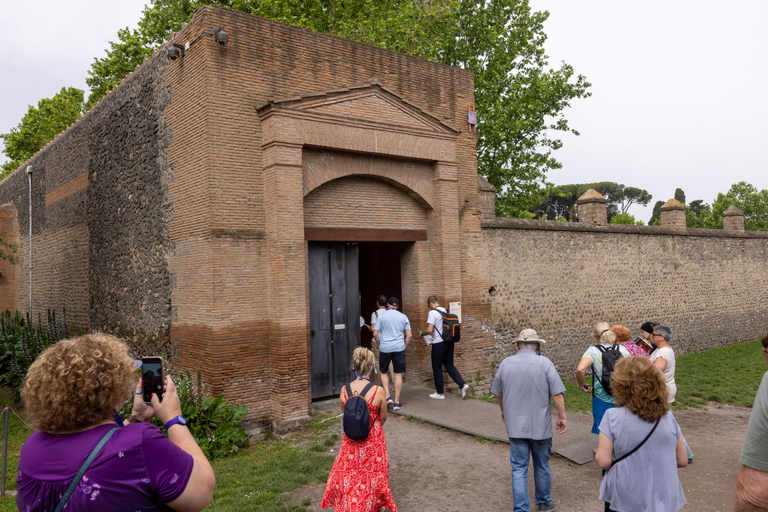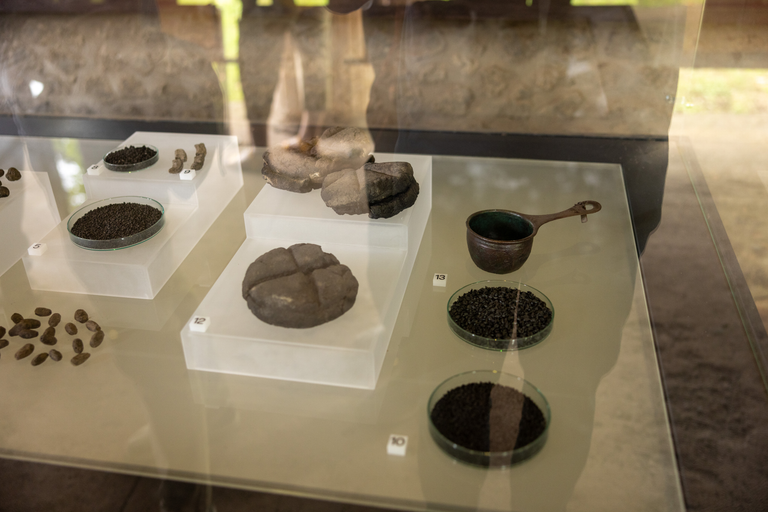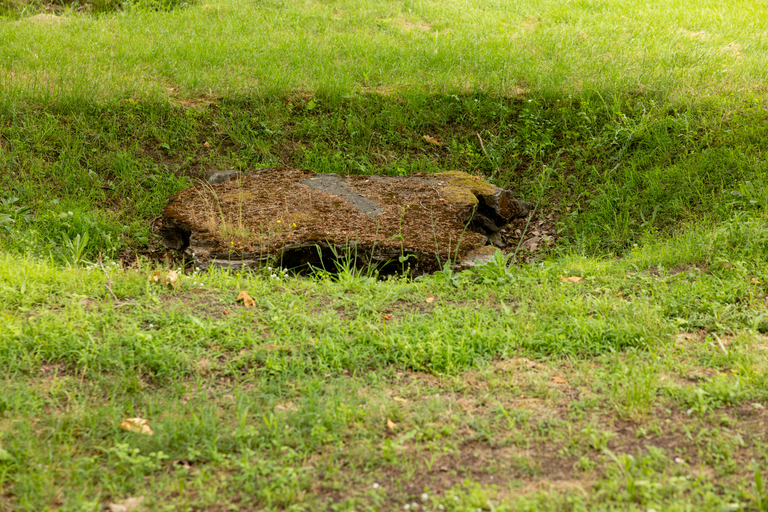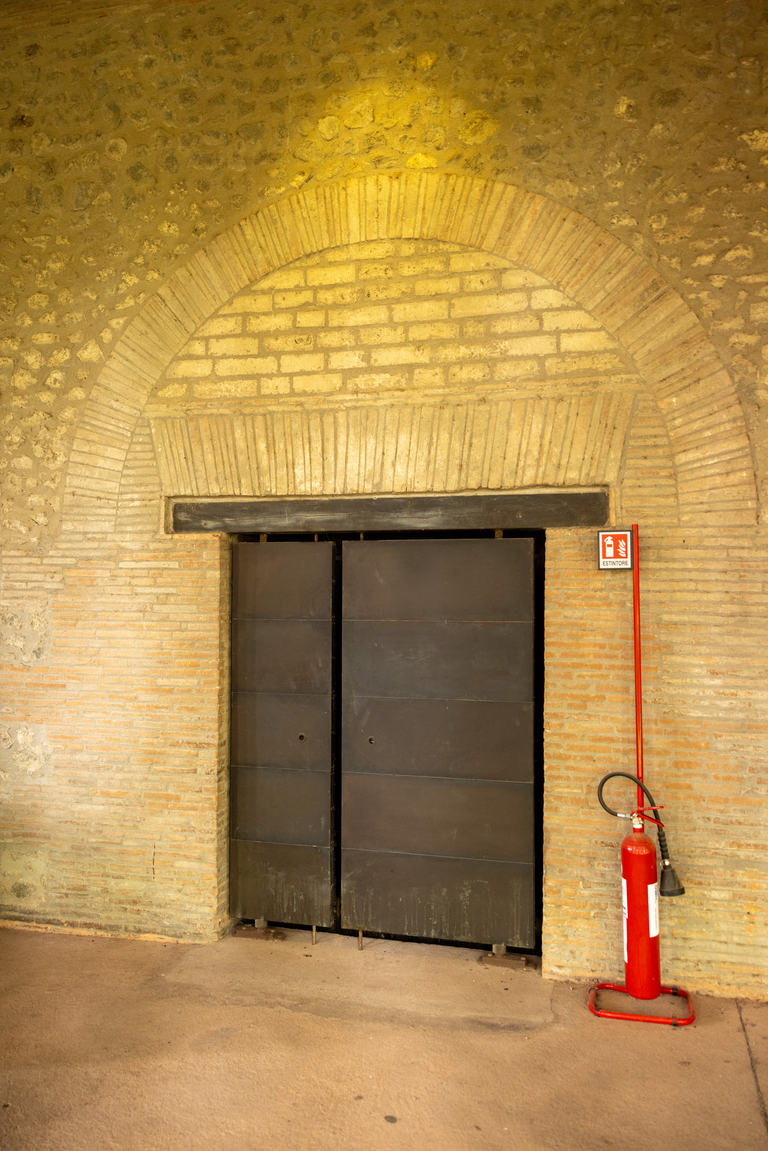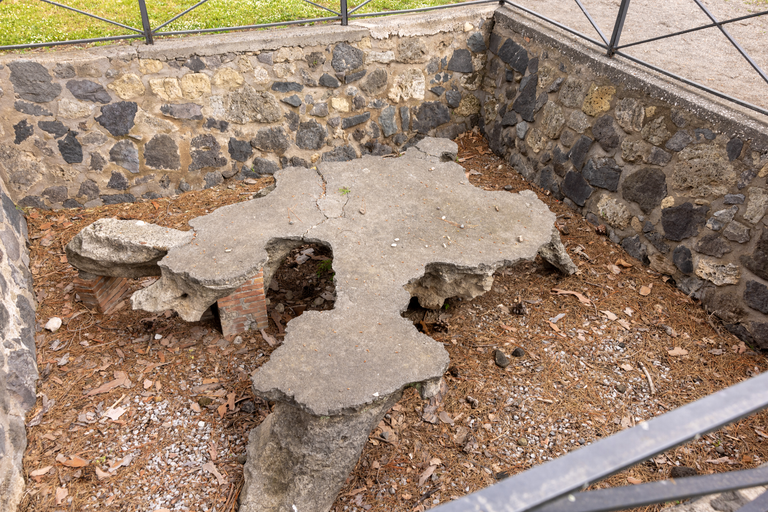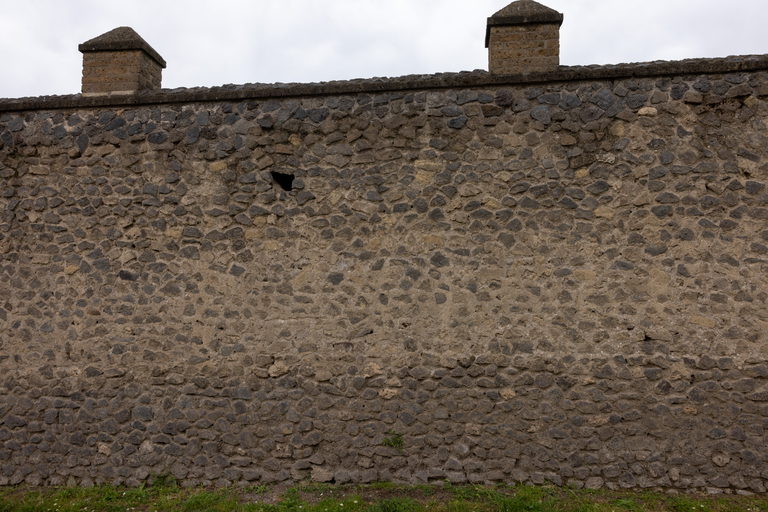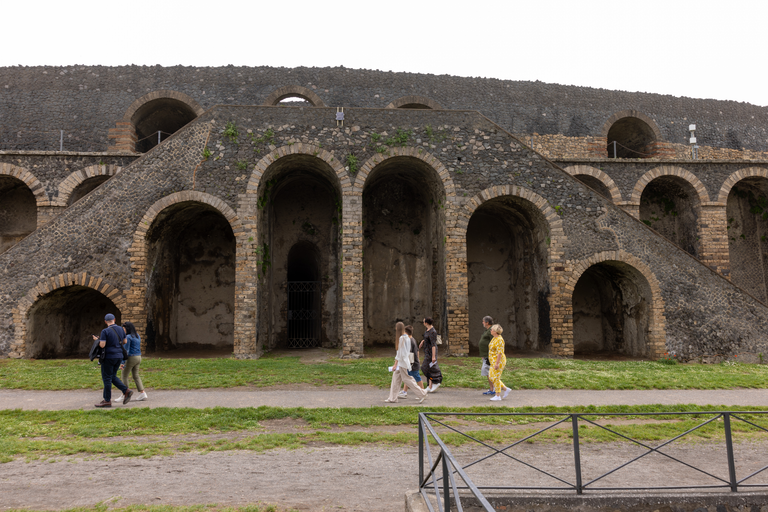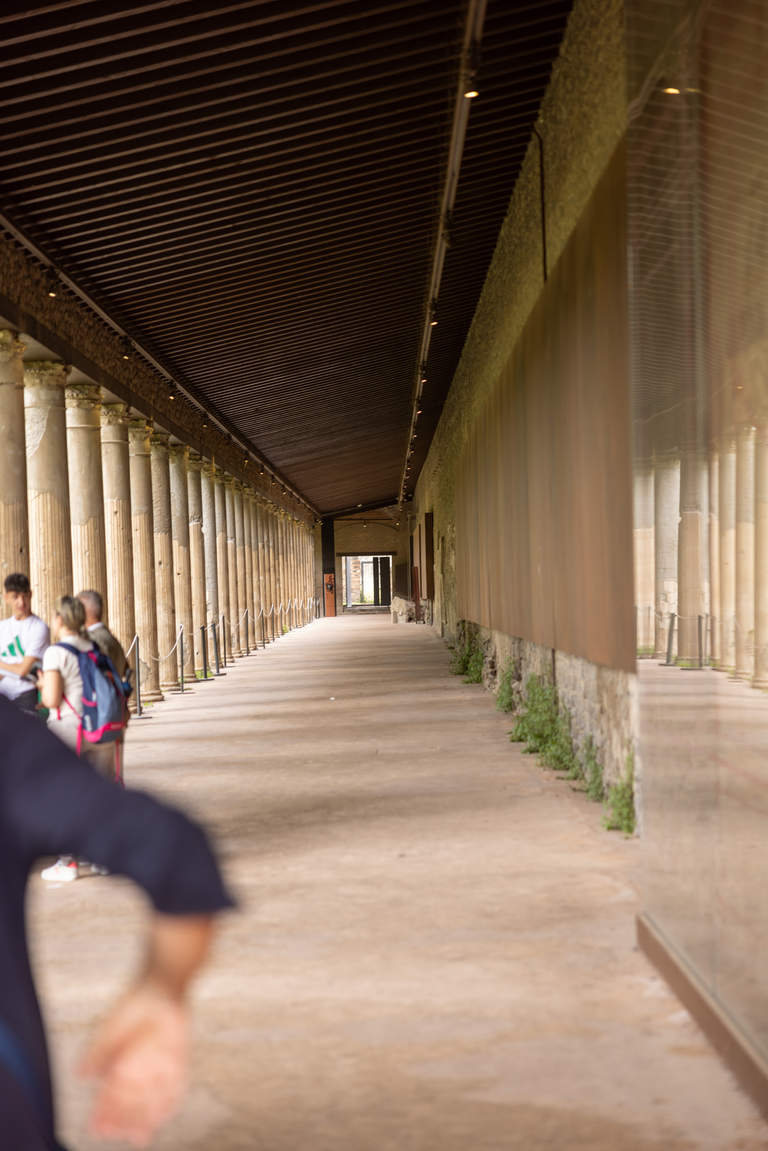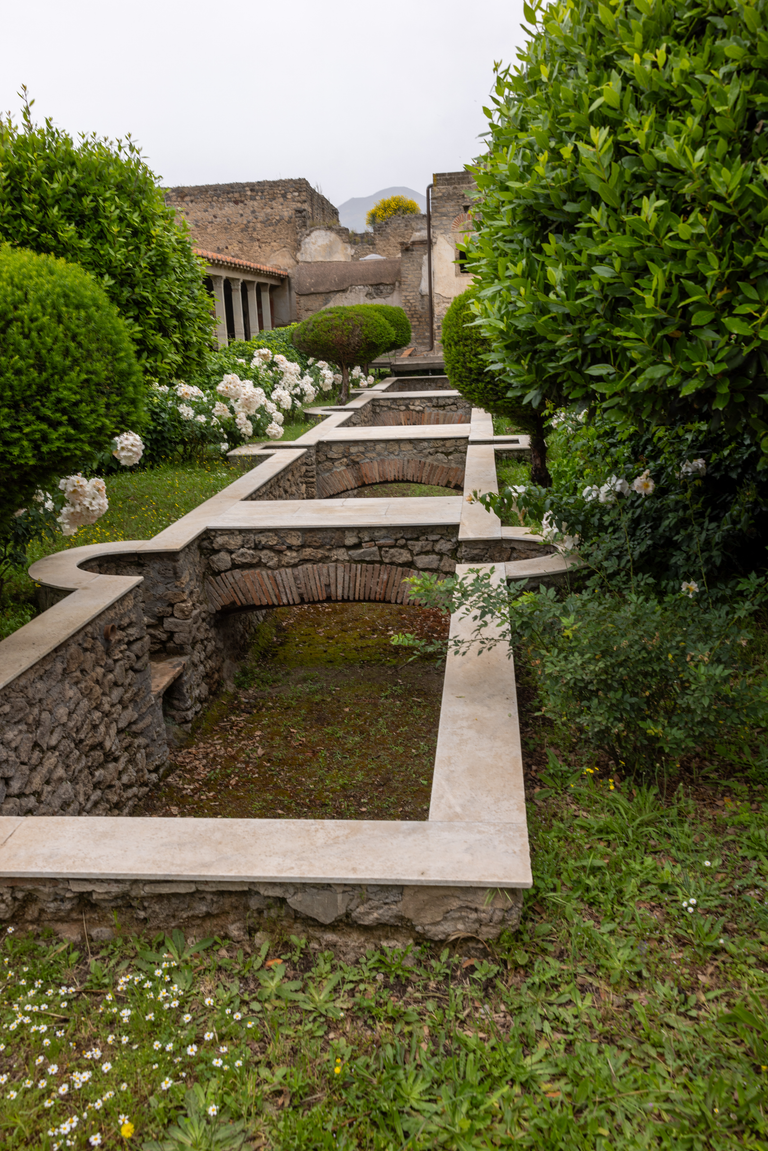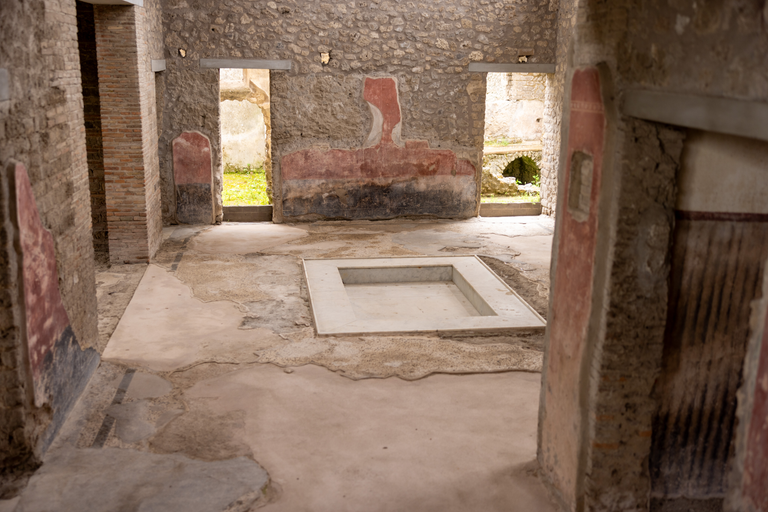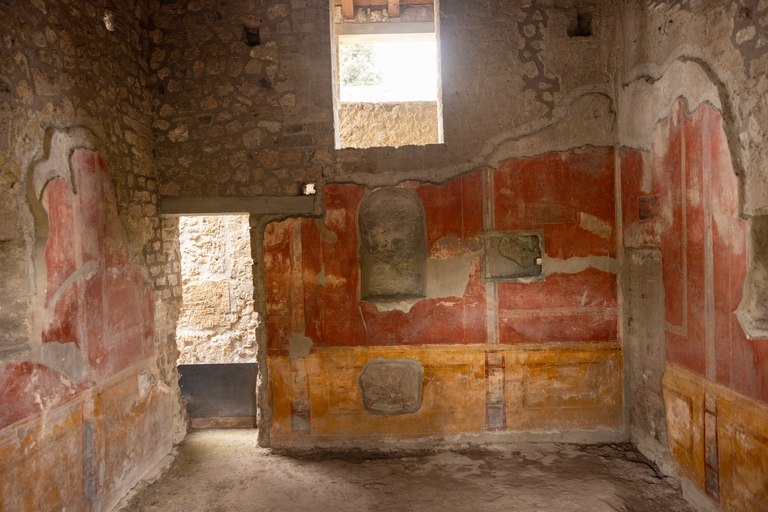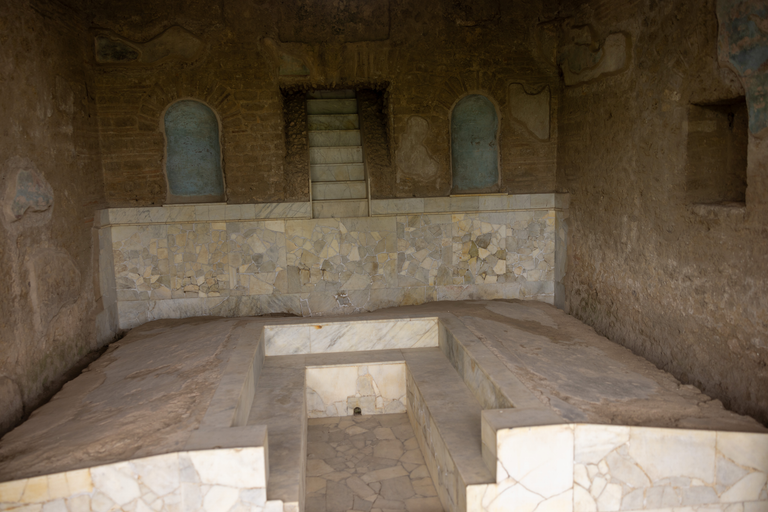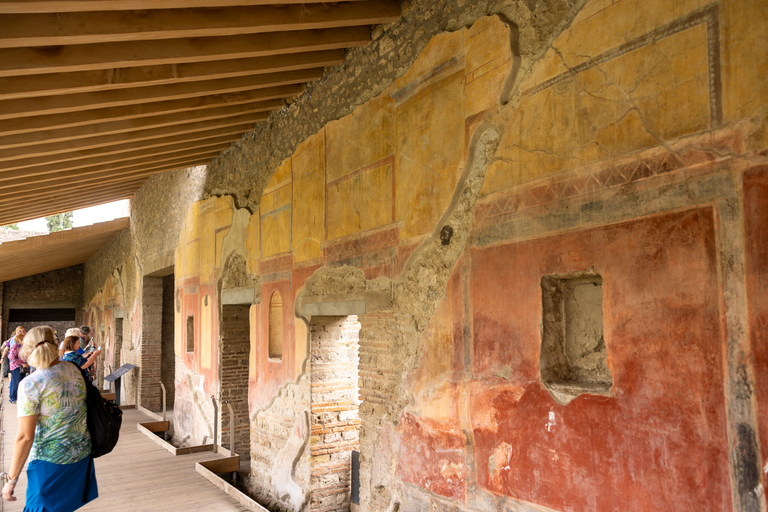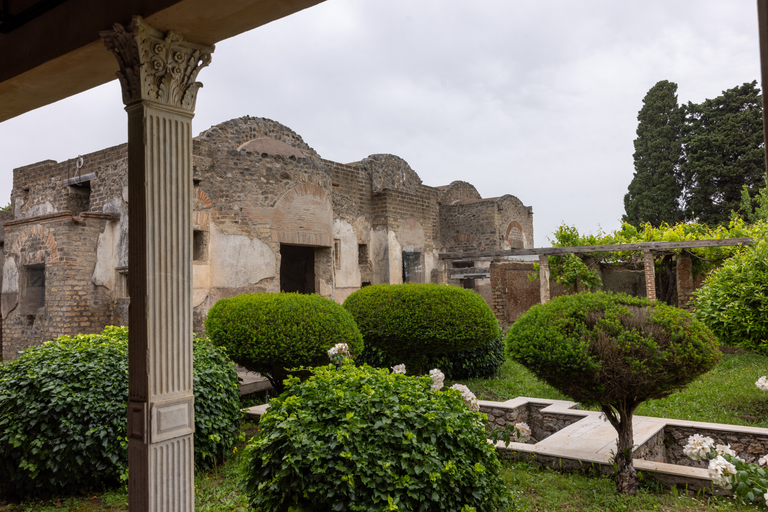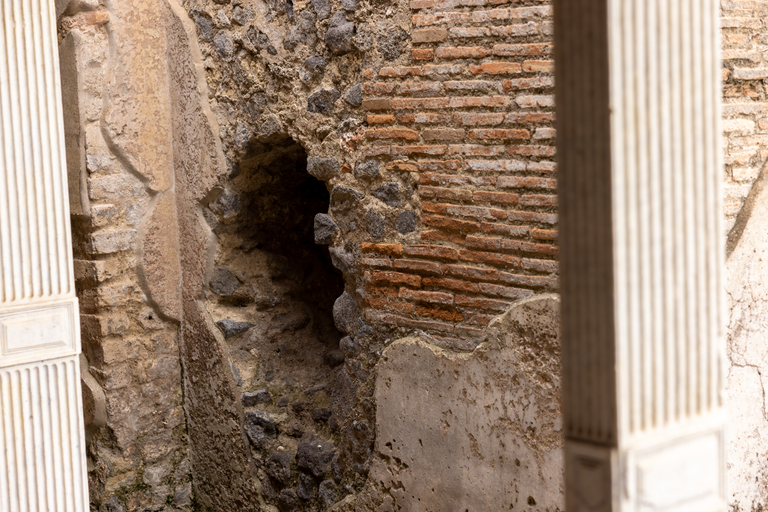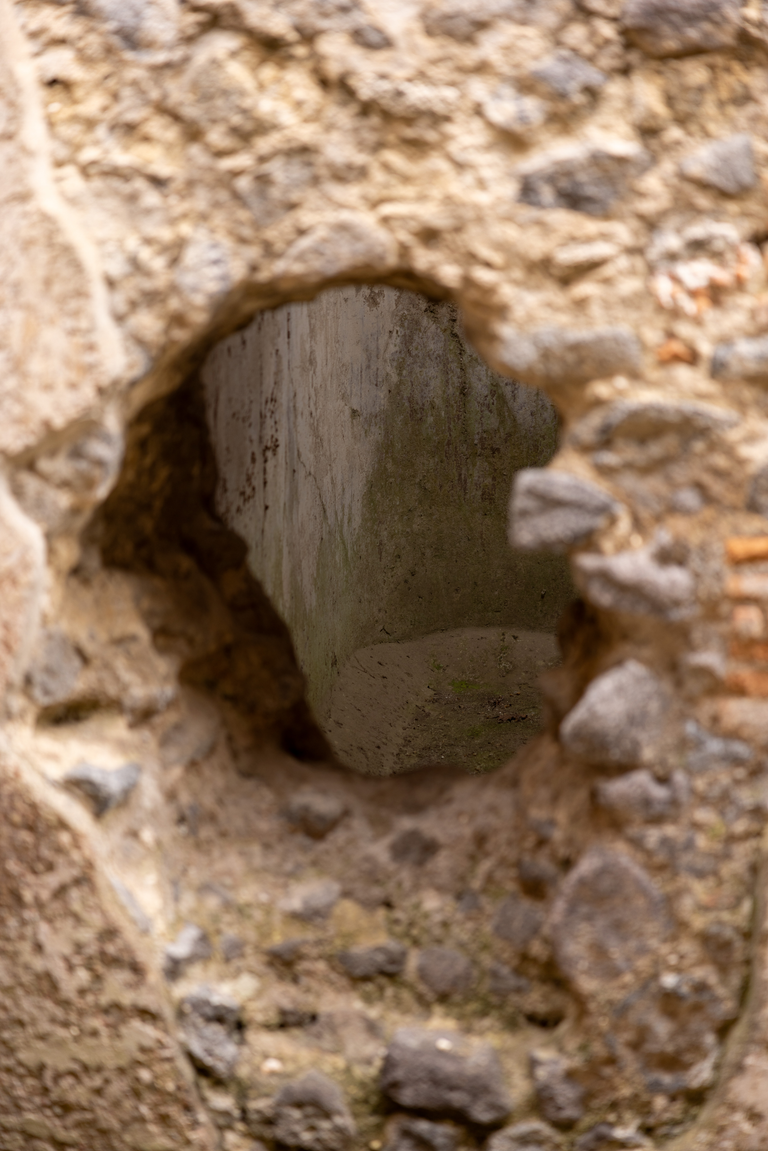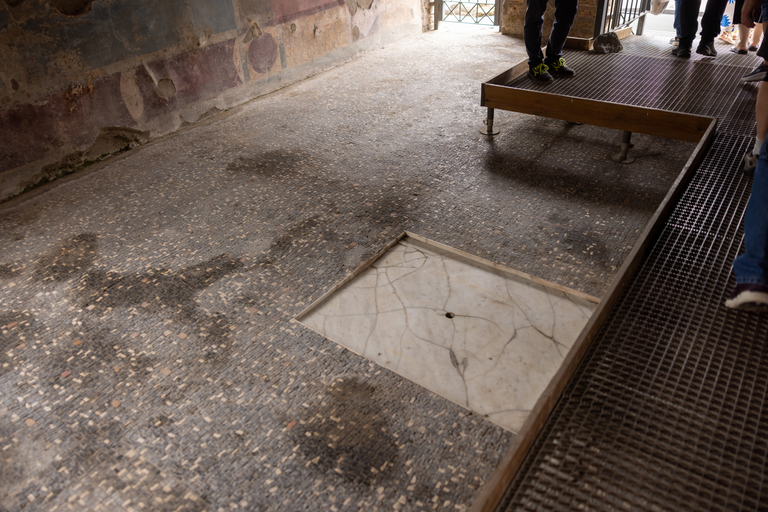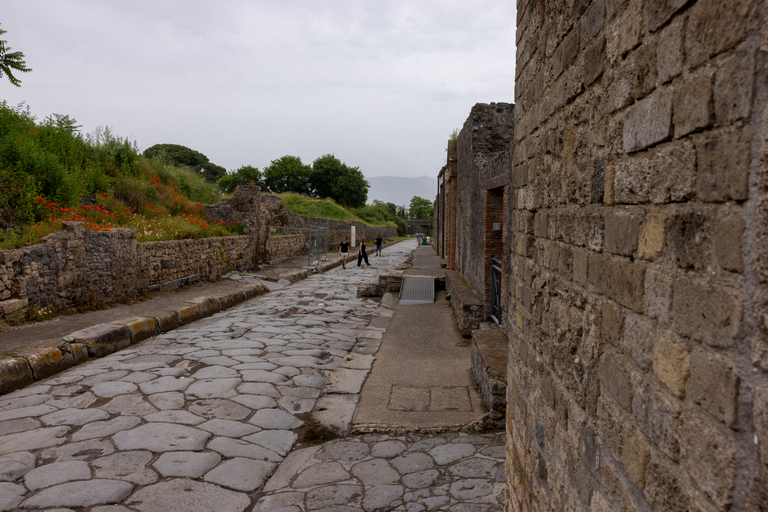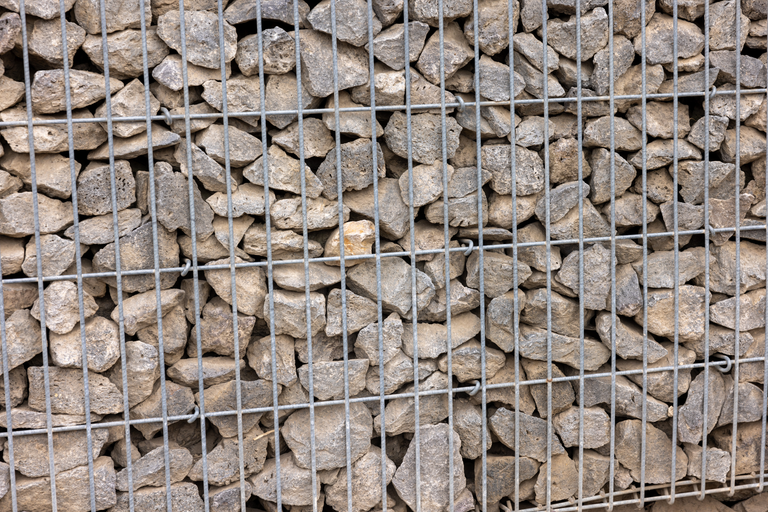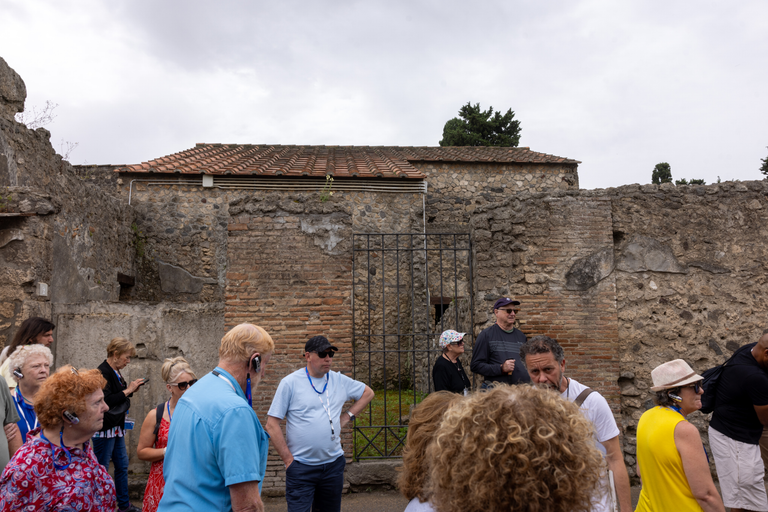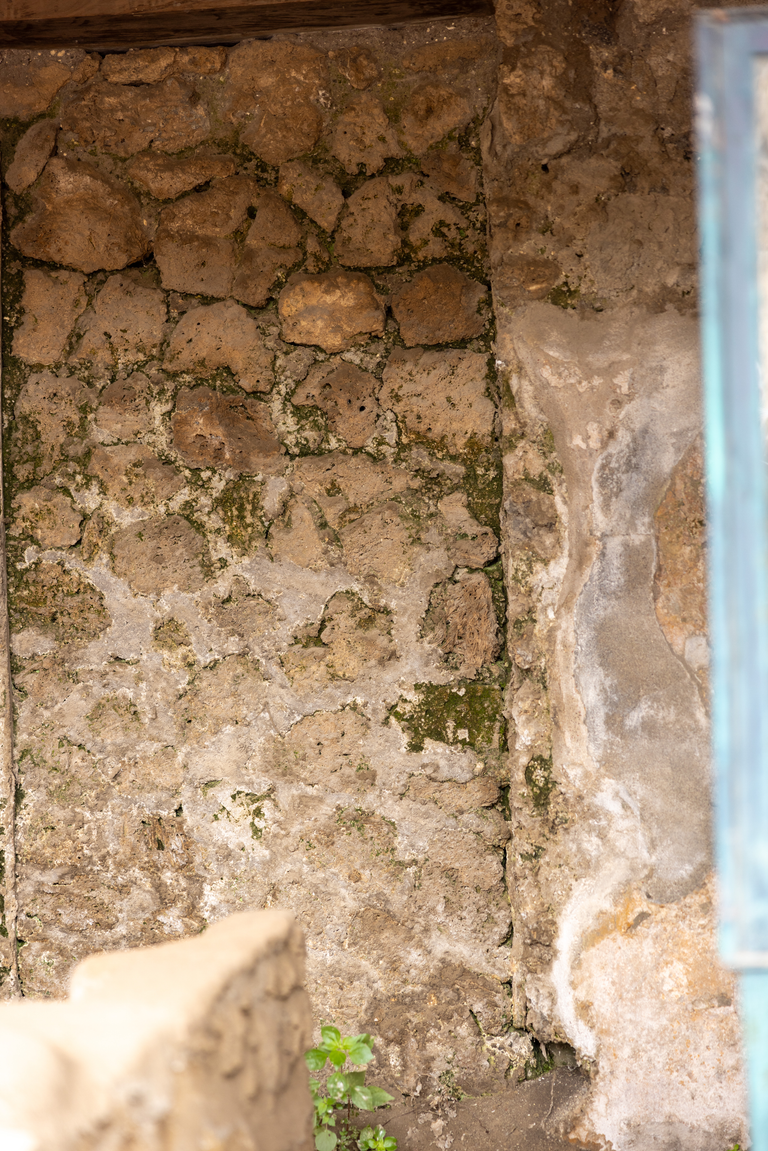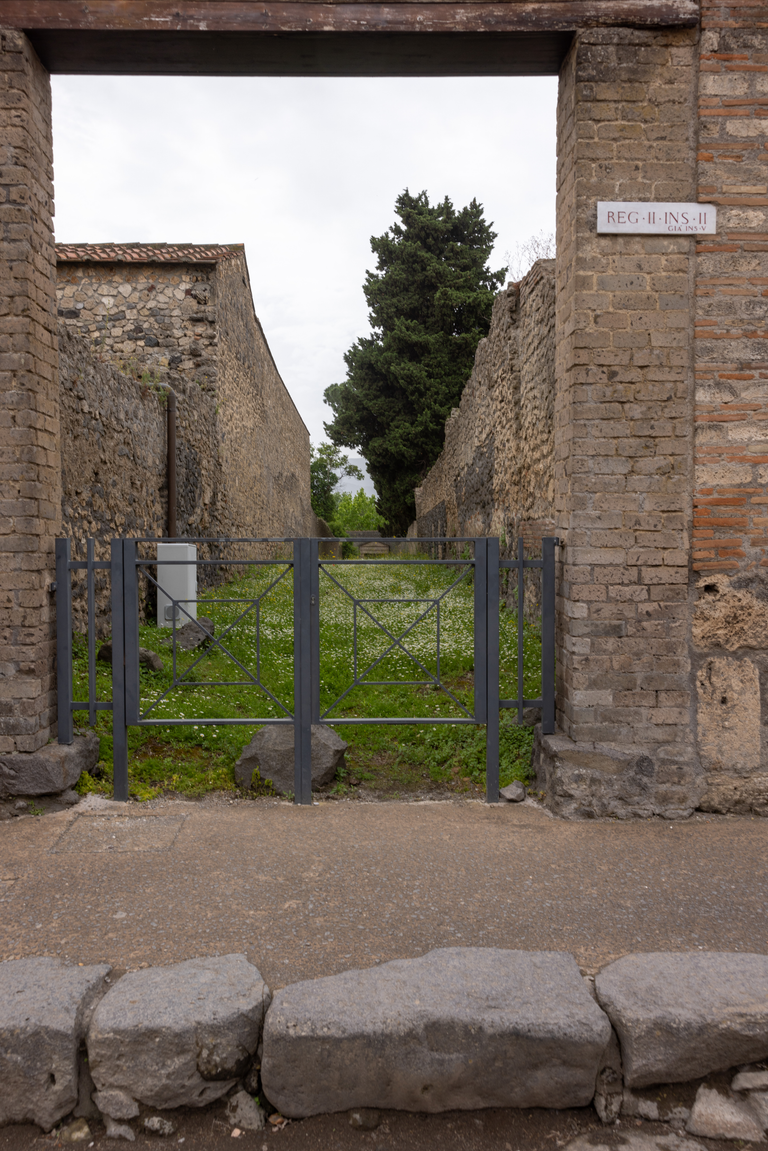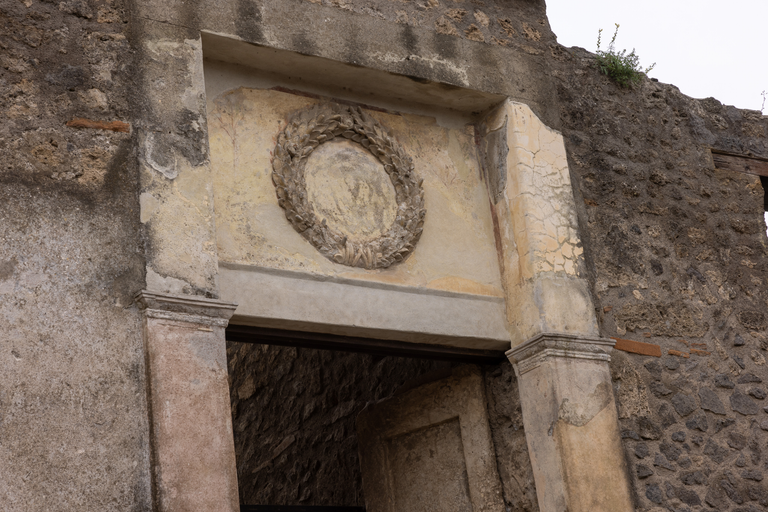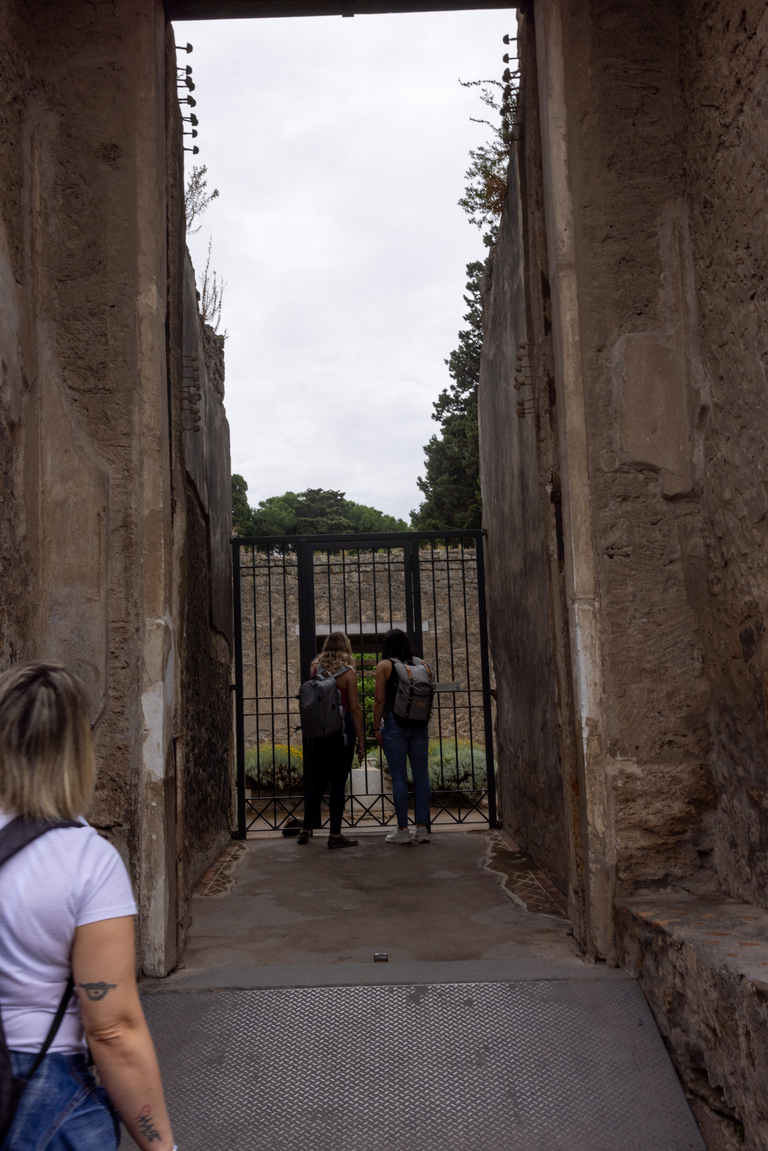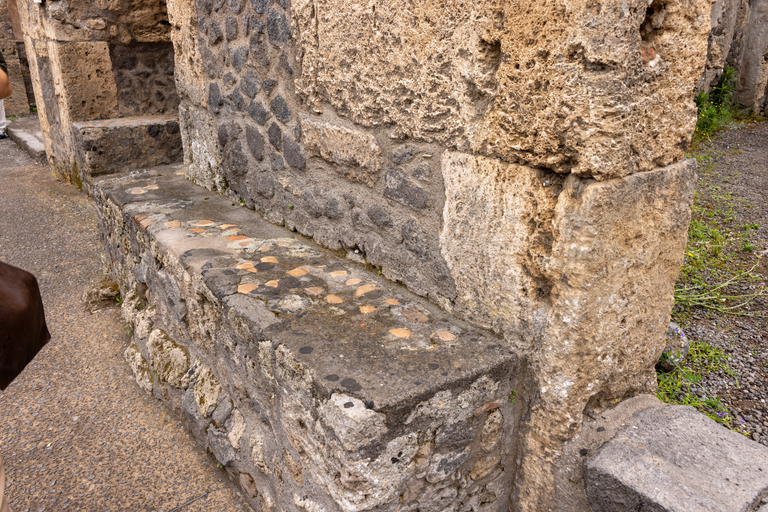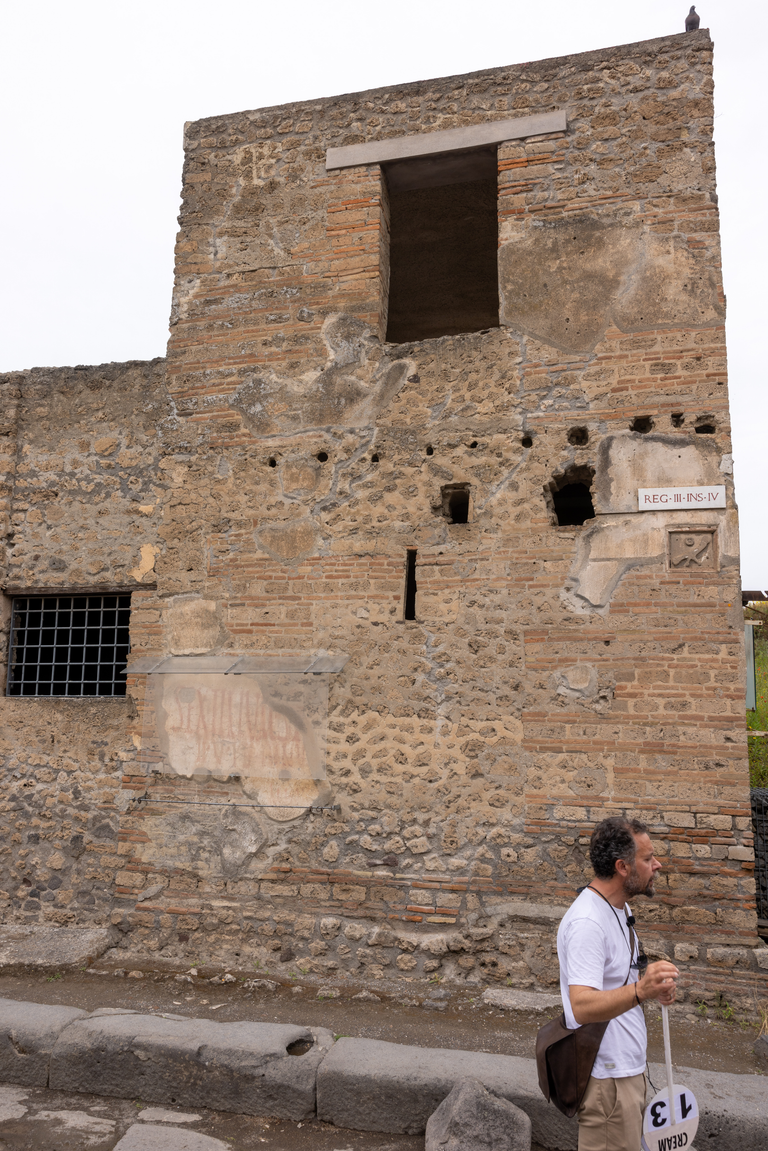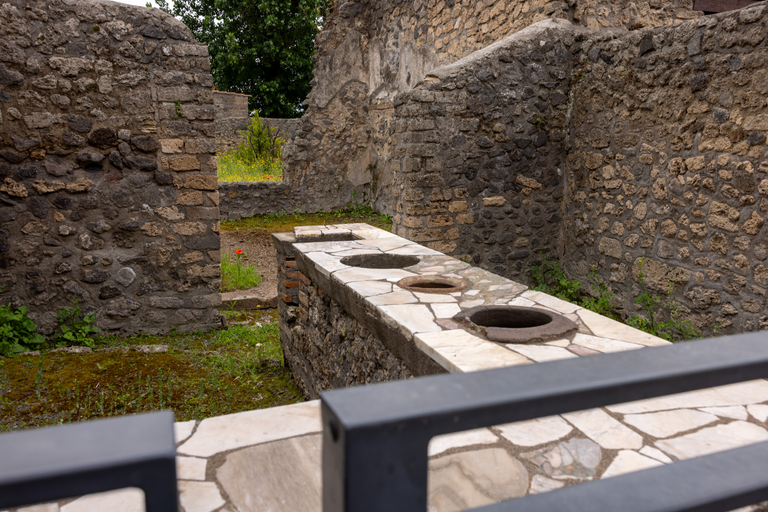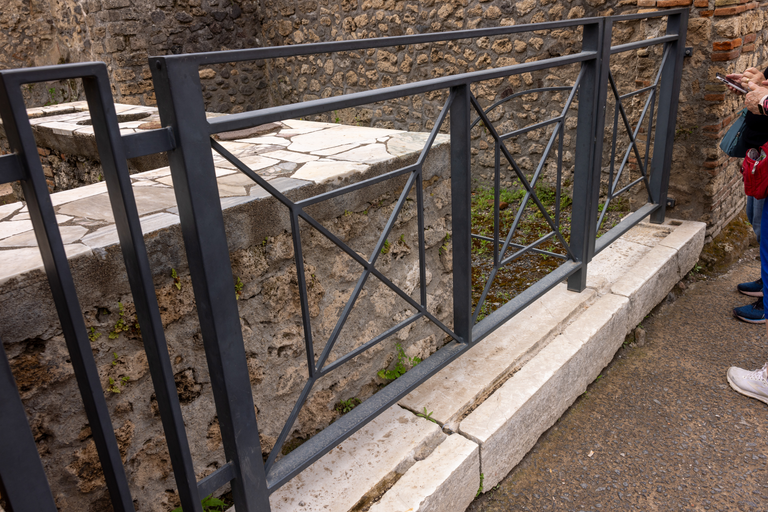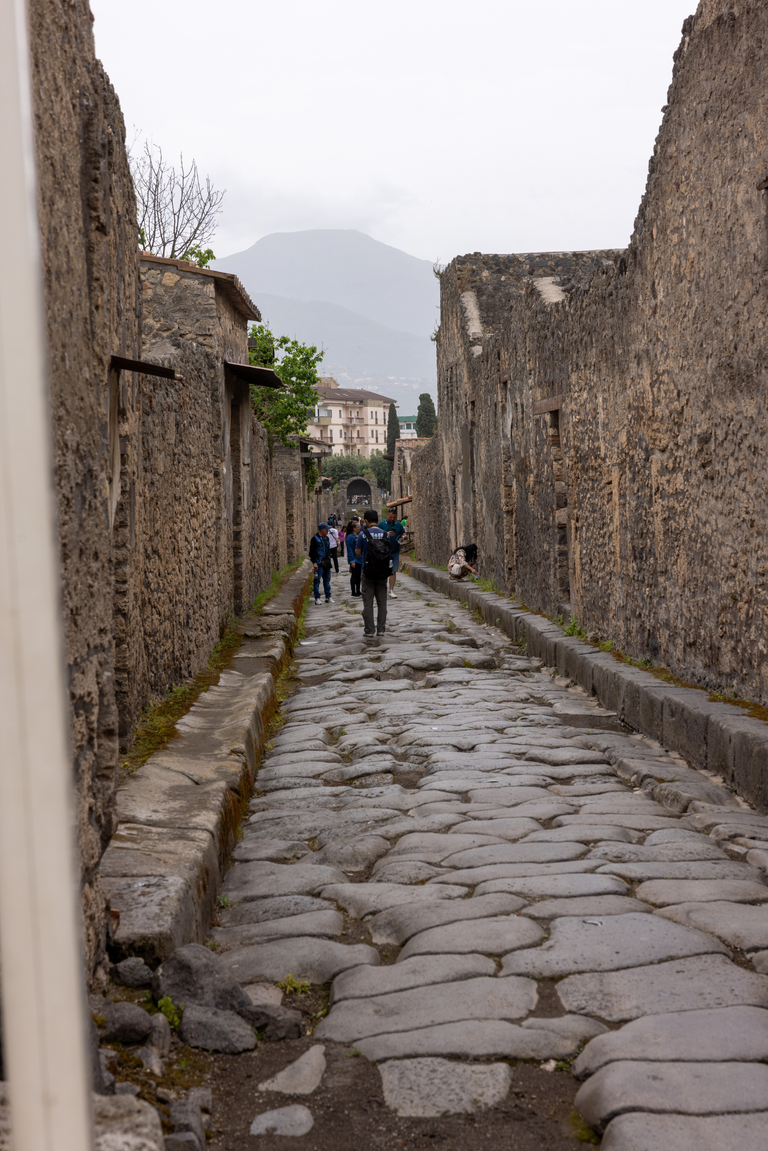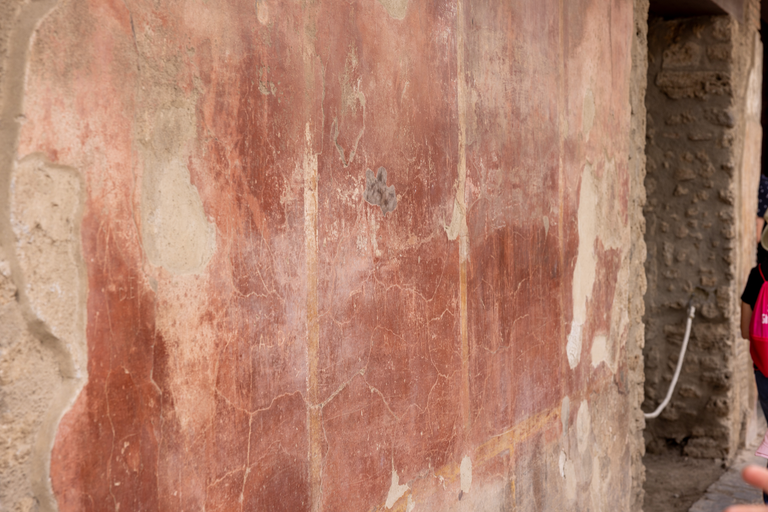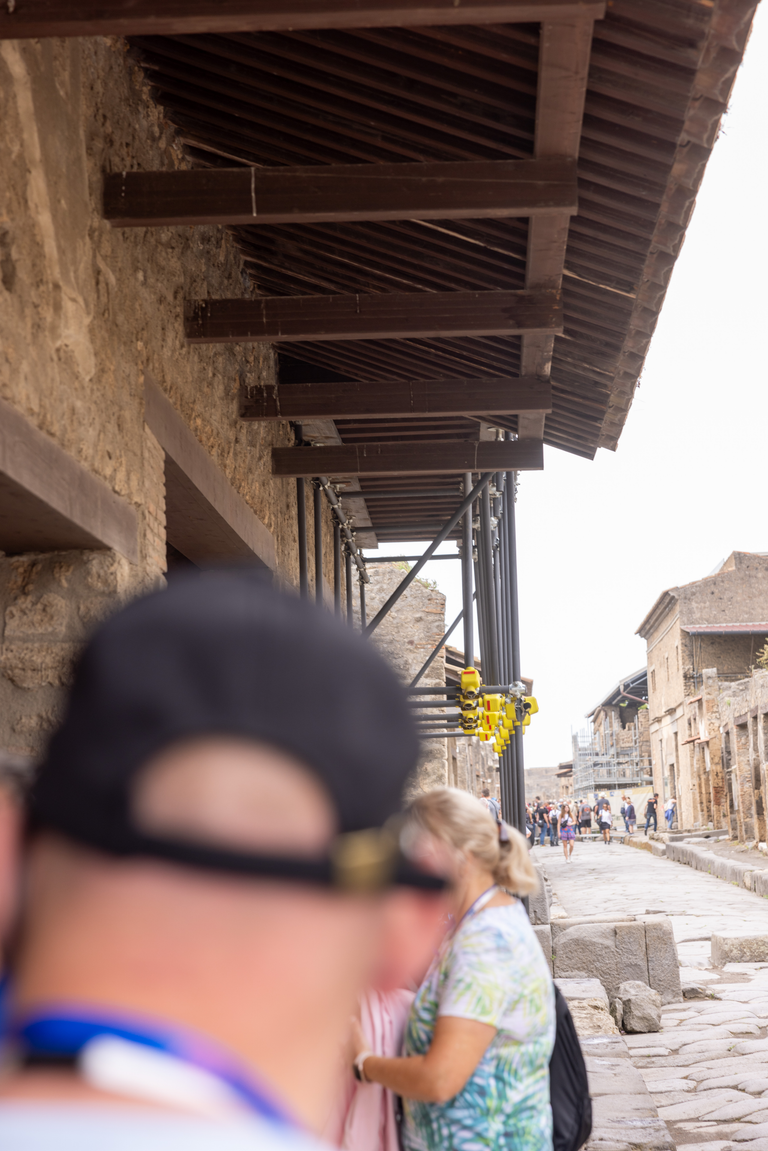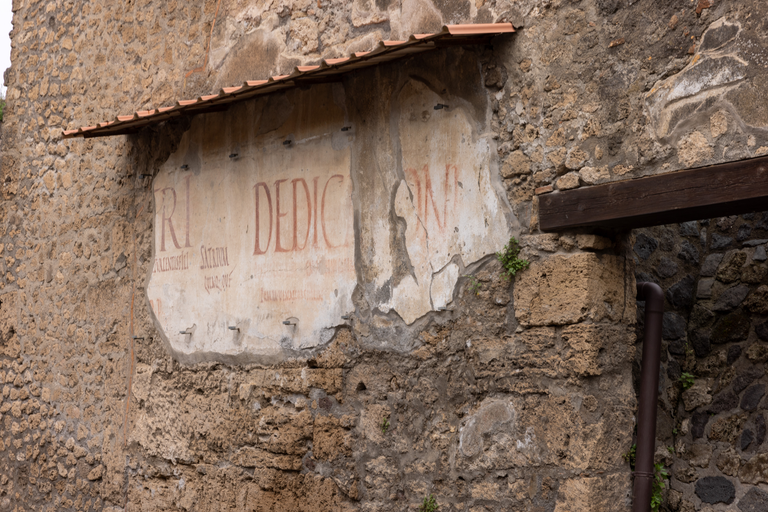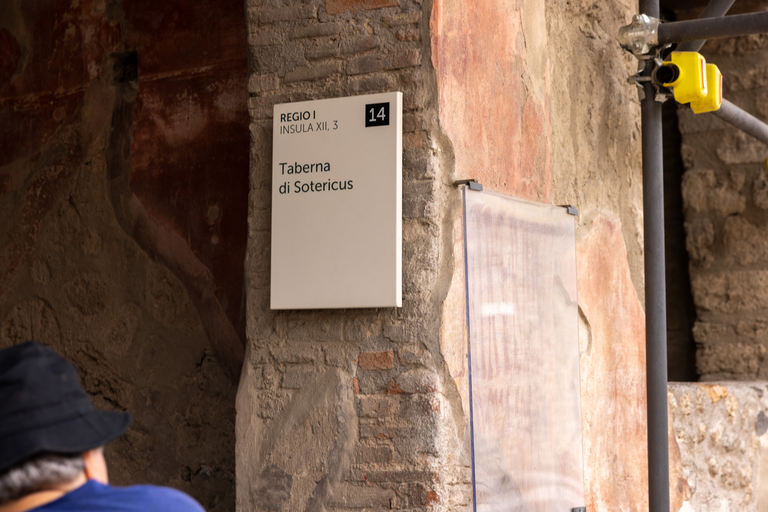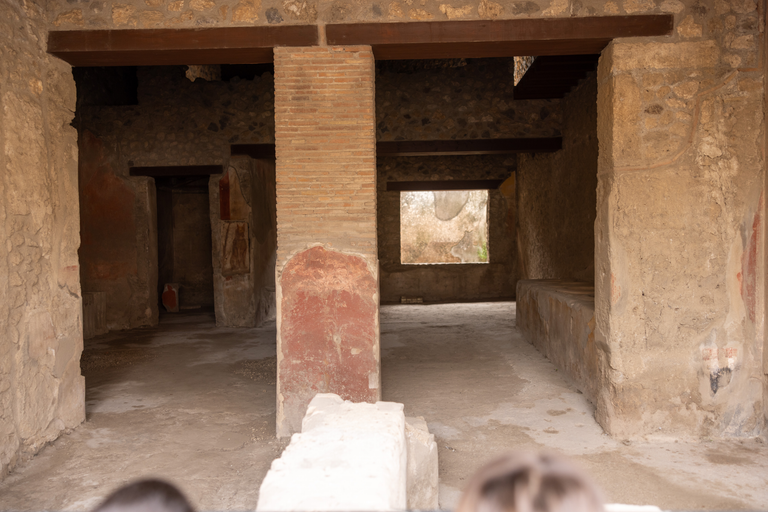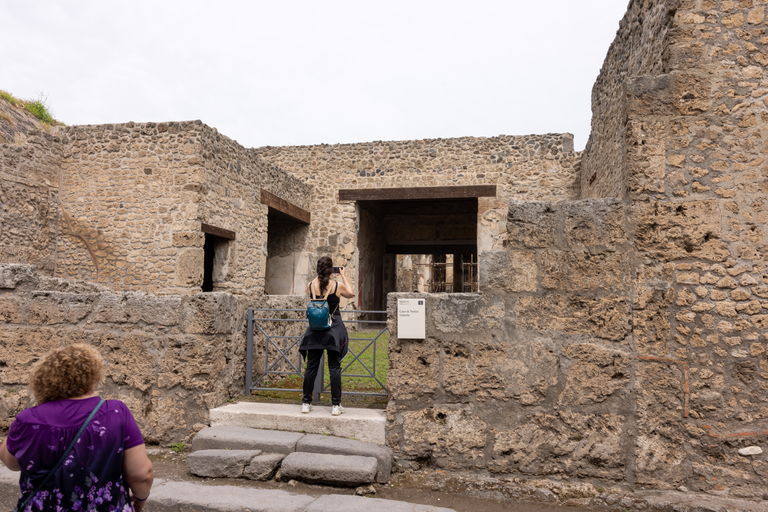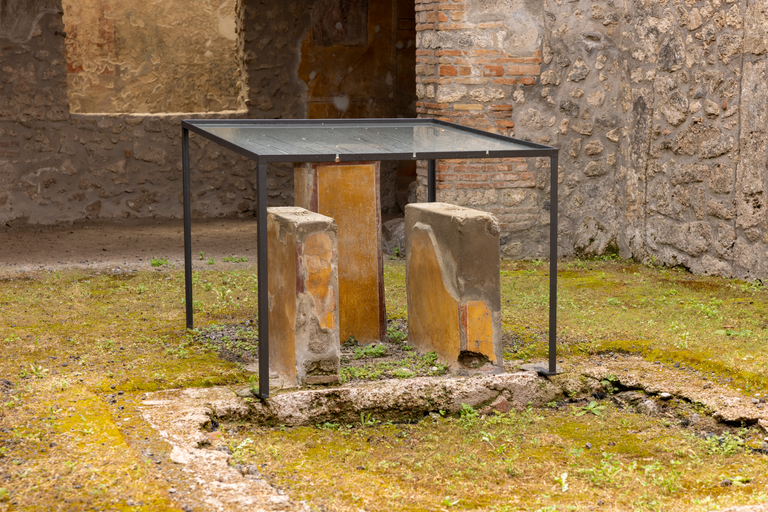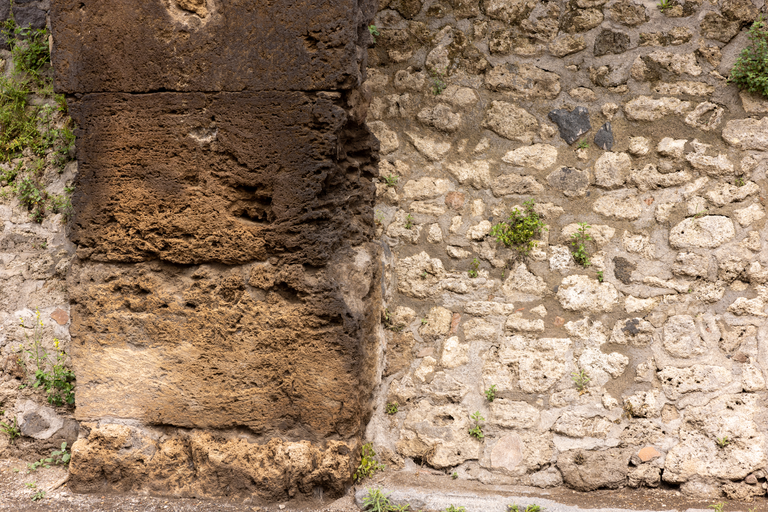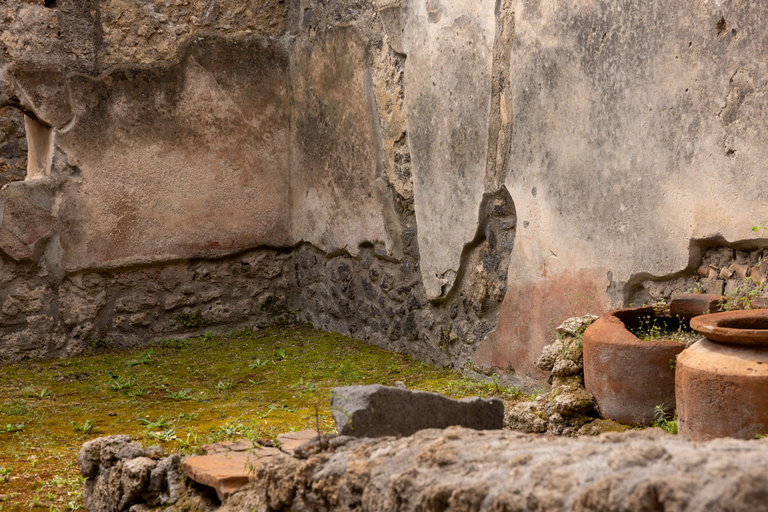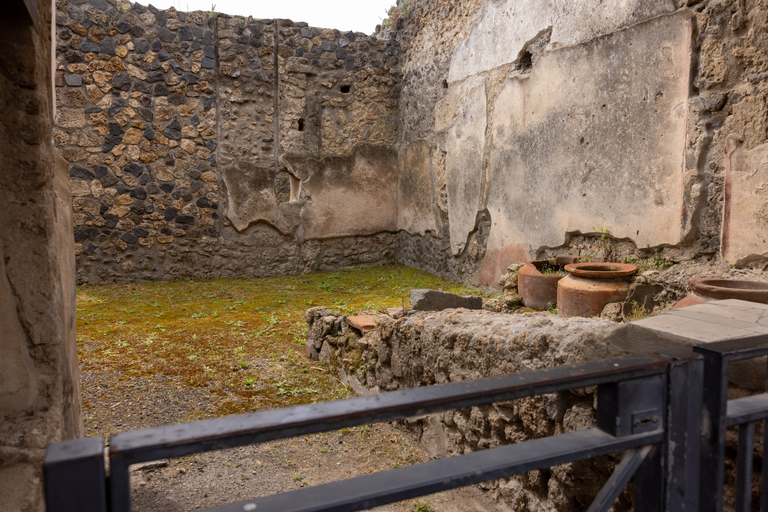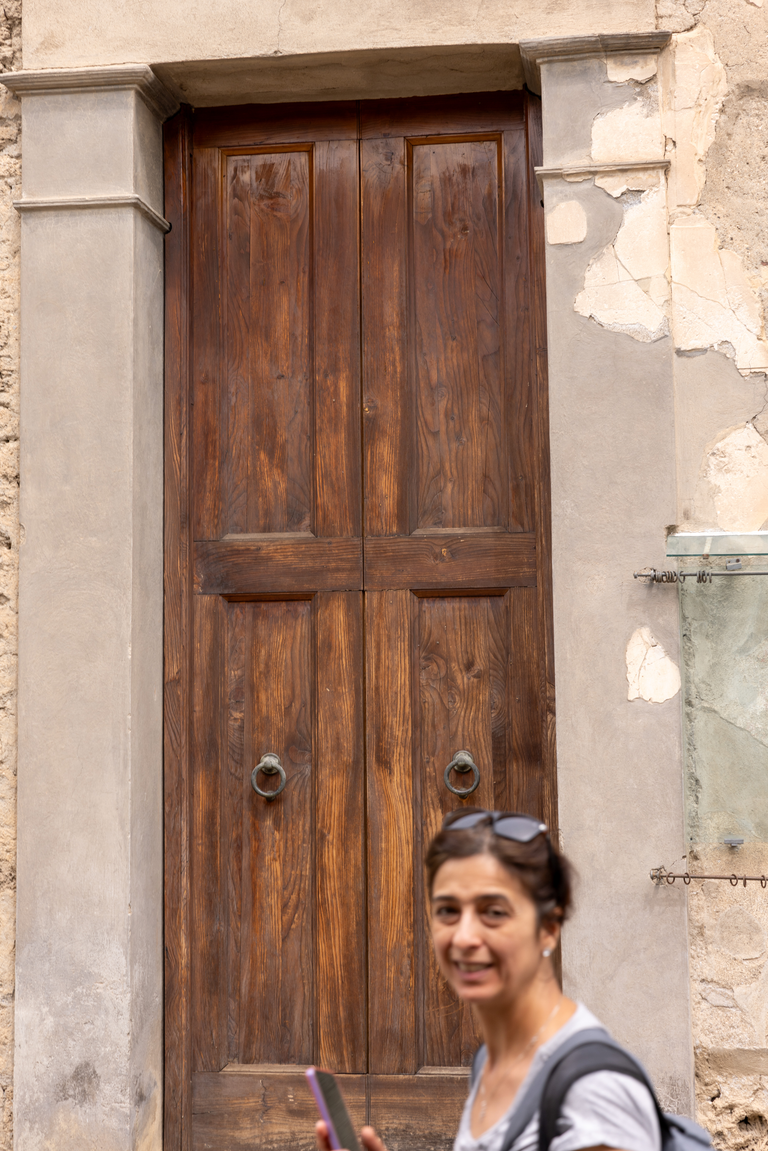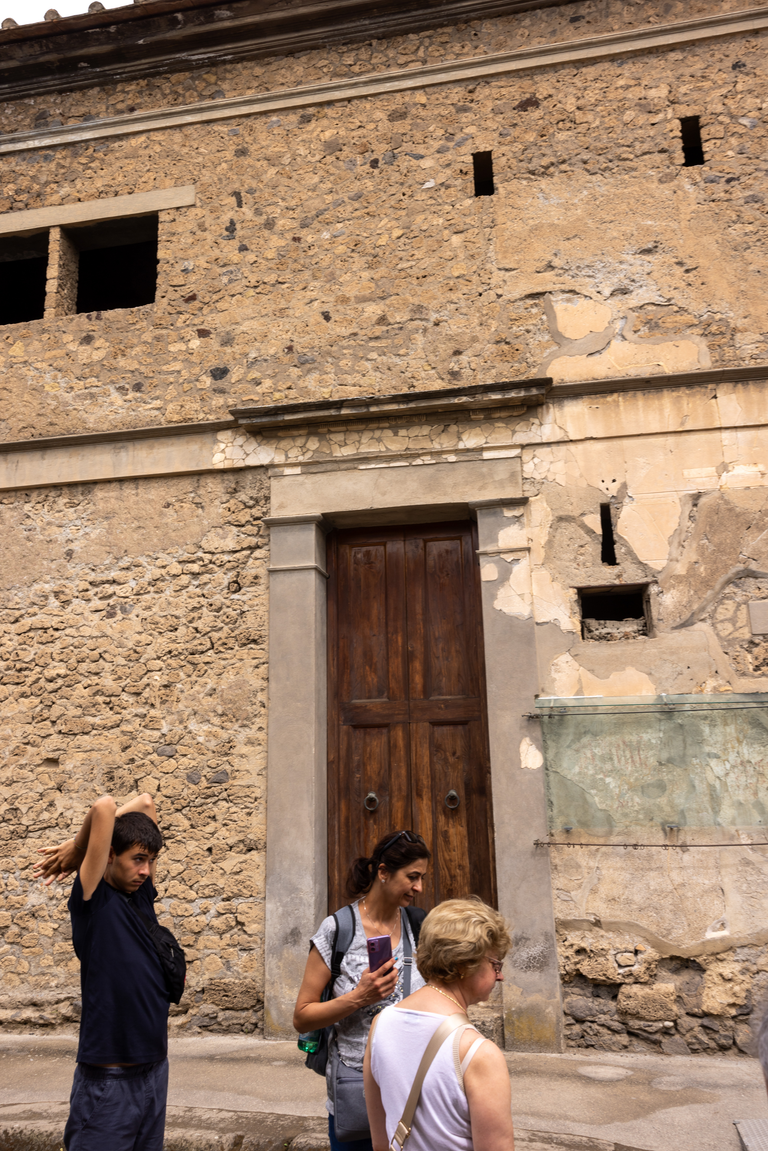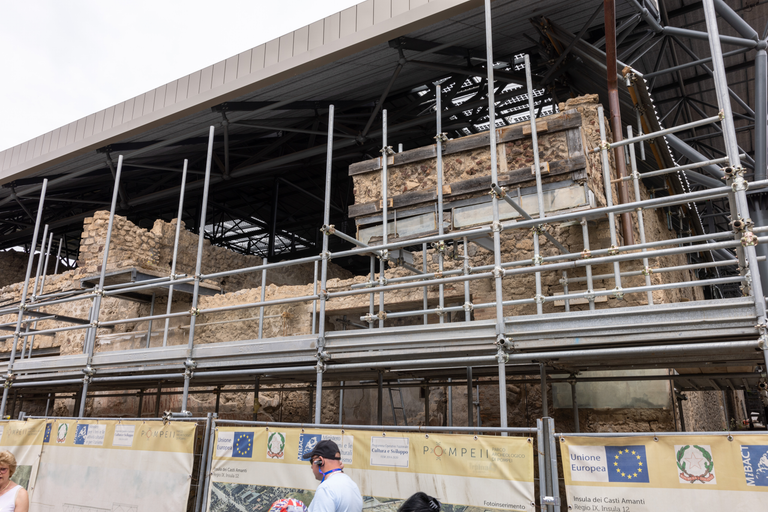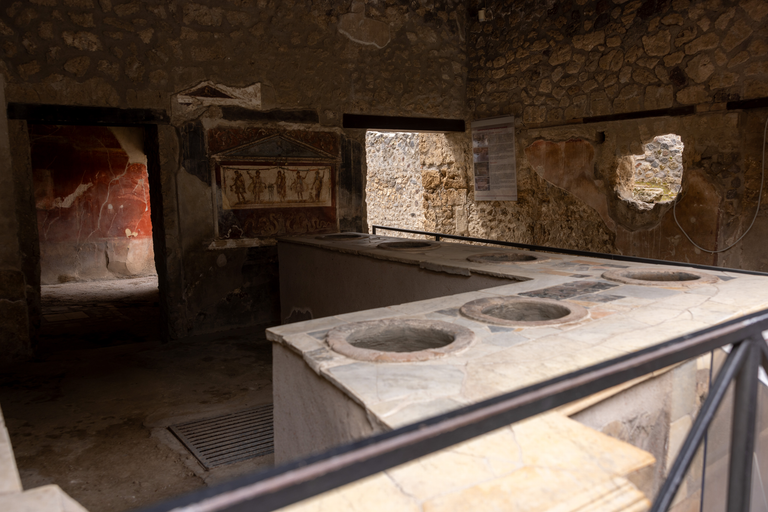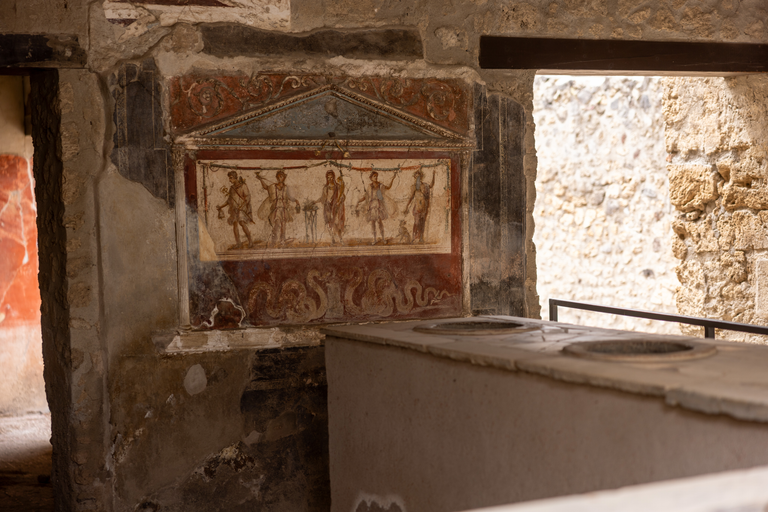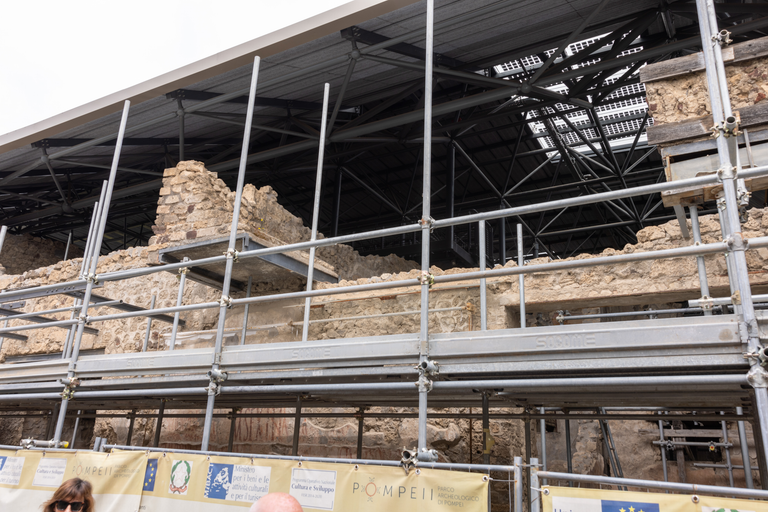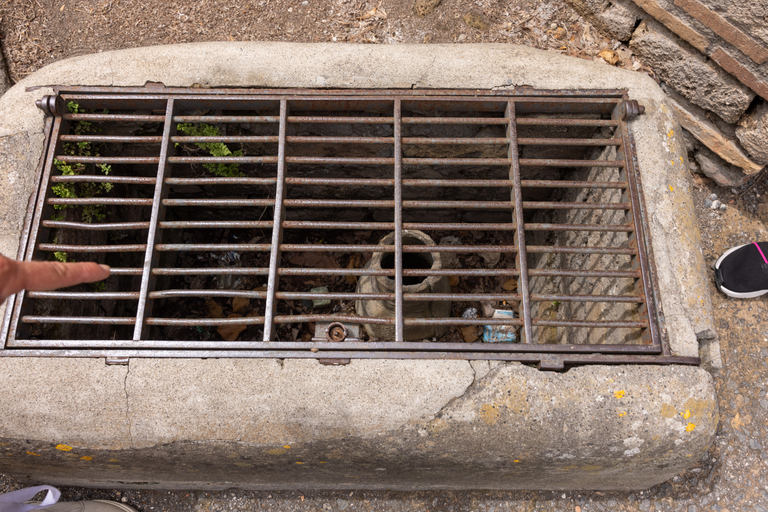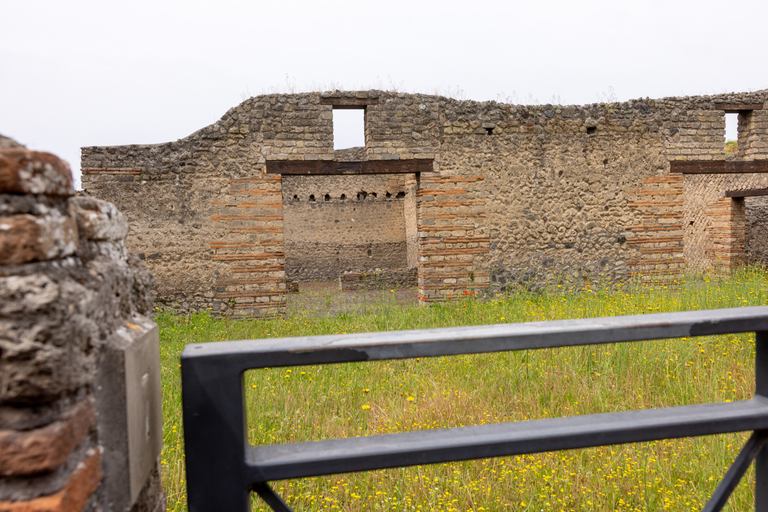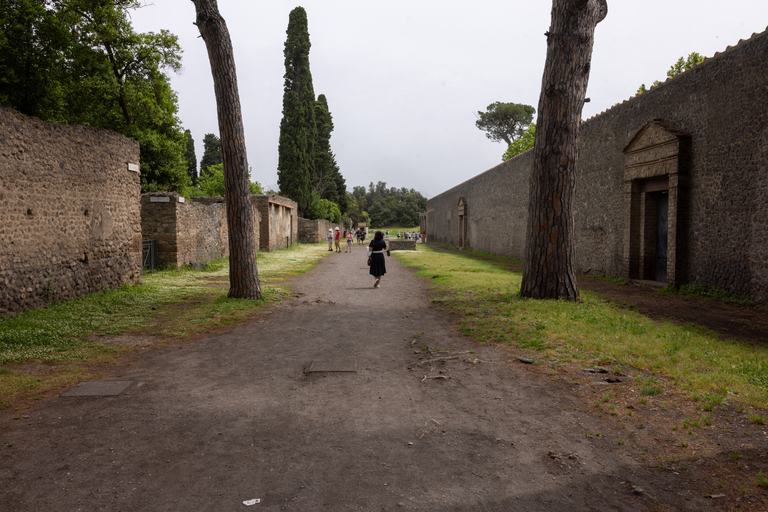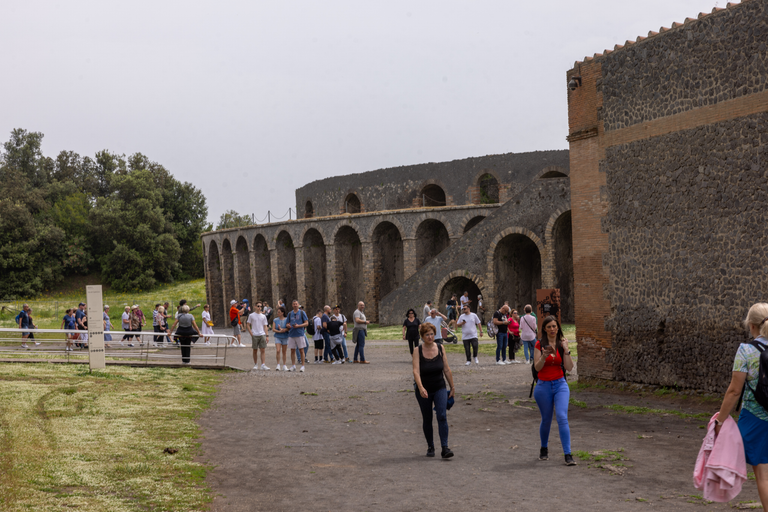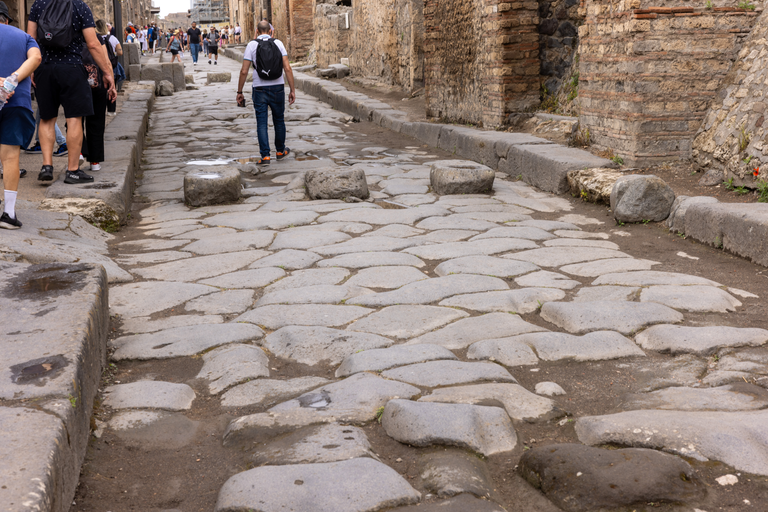Pompeii
by Joel Bermanpublished on
Pompeii was a famous city in Italy. It was ideally located near a harbor on the Sarno river, a harbor on the Tyrrhenian sea and the fertile land from very old eruptions of Mt. Vesuvius. So it could trade agricultural products and fish for various goods.
October 79AD saw an eruption of Mt. Vesuvius (54) which can be seen in the first image. Unfortunately the people there had never seen a volcano erupt so didn't run away. The first day saw ash coming out, but the second day a pyroclastic cloud emerged. The people ran home to hide, and the heat of the cloud, reaching 400 C or 750 F, killed them instantly. Later hot ash, mud and lava encased everything. During excavation they found molds where the people had melted away leaving a mold of their body. What you see in pictures 1 and 2 are plaster injections into those cavities, The position of their arms is a reflex, not from trying to avoid the heat.
Picture 3 shows on the left a palaestra where gladiators lived and trained and on the right, the arena. Only 12,000 people lived in Pompeii so the areana is much smaller than the colosseum in Rome. Picture 5 shows carbonized food, the bread is still baked today.]
Pictures 6 and 9 are plaster molds of pine tree roots. They can tell from the size of the roots approximately how old the tree was.
7 is the door to leave the training area and enter the arena. 8 and 11 are the areana, and 10 is the city wall. The arena is the closest part of the city to Vesuvius. 12 is the outer corridor, one on both sides of the training area.
13 through 17 is the praedia (estate, not to be confused with praeda) of Julia Felix, a noblewoman and is quite large. The only way to be a noble was to be born as one and nobles never married commoners. A great general may be gifted an estate, but there were not that many great generals. Her estate has fountains, swimming pools and beautiful gardens as well as many rooms.
18 and 19 show a hole caused by a tunnel. The early archeologists dug down until the found something and then would tunnel in, often destroying walls in the process.
The images until 26 are street scenes. 26 is the first of many thermopoliums or restaurants - 32 and 47 are others. The pots or amphoras would hold either hot food or wine.
Outside of many of the larger homes were benches for the people lining up to speak to the owner. The longer the bench, the more important the resident.
The holes in the wall in 31 are where the joists would be placed to support the higher storeys. Pompeii had some three storey homes. Rome build up to six stories.
48 shows one of many frescoes. Pompeii is famous for the pink color.
36 and 44 show reconstructions of doors and overhangs.
50 shows a lead pipe used to bring water into homes. There were many public fountains for the poorer class, but the nobles had lead plumbing. Unfortunately for them the lead and antimony was highly toxic and many nobles suffered from lead poisoning.
The last image is a street. Stepping stones allowed crossing and also allowed carriages to pass.
